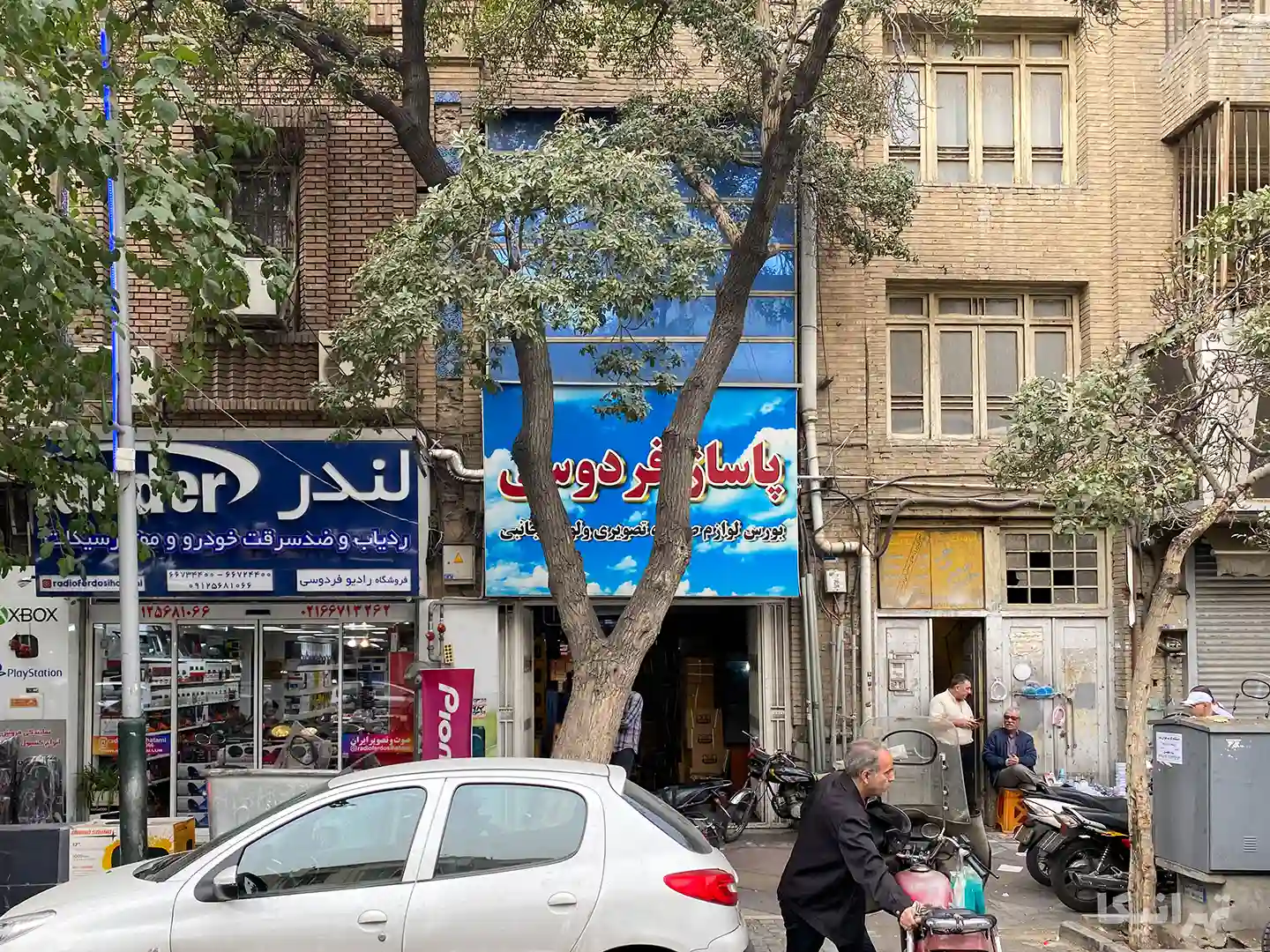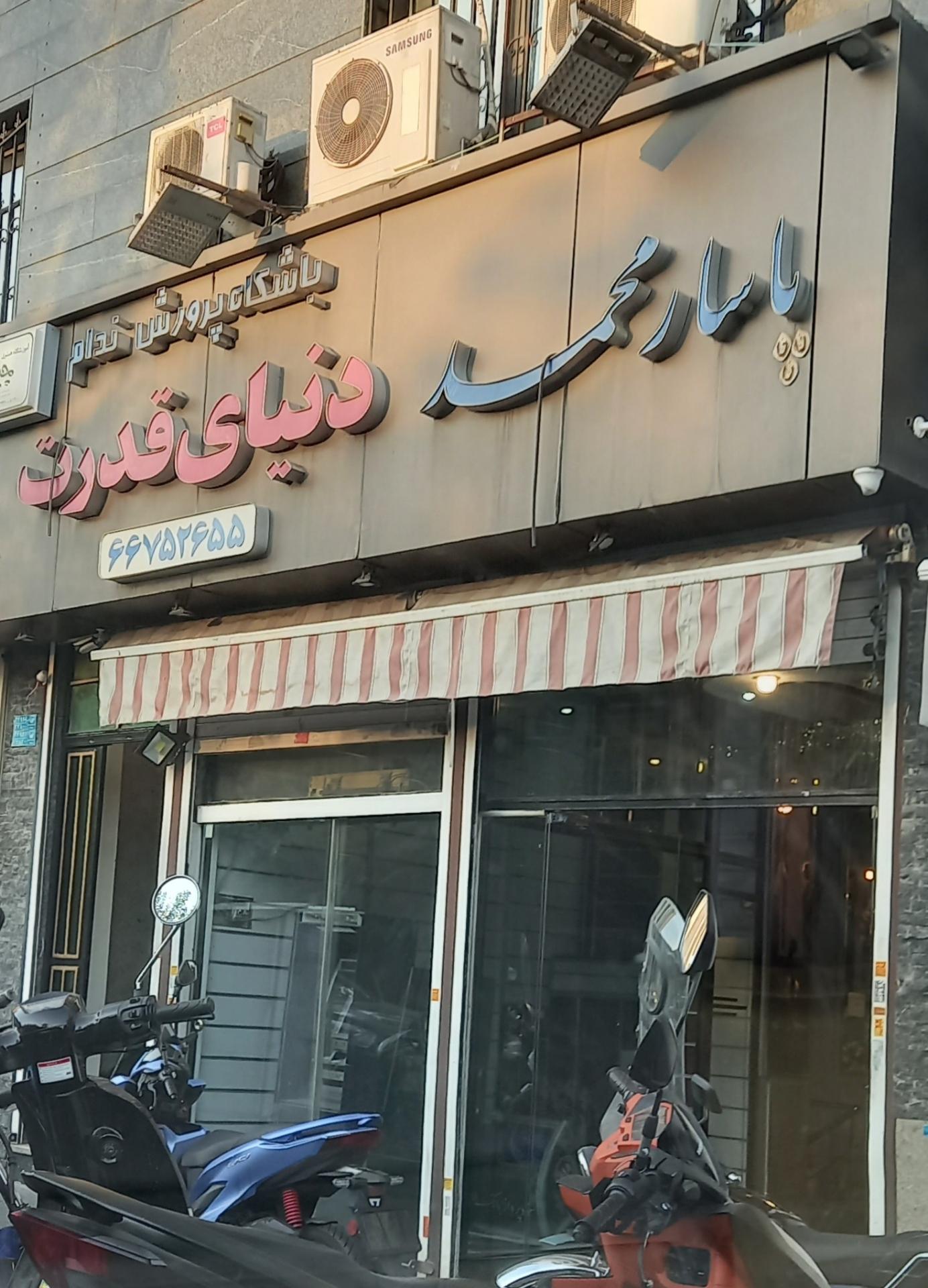Paradise Passage: Unlocking The Secrets Of Ferdowsi's Masterpiece
Let’s talk about Ferdowsi's epic creation, the Shahnameh, which is often referred to as "Paradise Passage" in literary circles. This masterpiece isn’t just a book; it’s a treasure trove of Persian history, culture, and values. Imagine diving into a world where heroes rise, villains fall, and legends come alive through verses that have stood the test of time. It’s like taking a time machine back to ancient Persia, but instead of clunky buttons, you’ve got Ferdowsi’s poetry guiding you every step of the way. So, buckle up, because we’re about to embark on an adventure through one of the greatest literary works in human history.
Now, before we get too deep into the nitty-gritty, let me set the stage for you. Ferdowsi wasn’t just some random guy sitting around scribbling poems. He was a visionary who dedicated his life to preserving the rich heritage of his homeland. In fact, he spent over three decades crafting the Shahnameh, a colossal work that blends mythology, history, and moral lessons into one seamless narrative. It’s like reading a thousand stories in one, each more captivating than the last.
What makes "Paradise Passage" so special? Well, it’s not just about the words; it’s about the emotions they evoke. The Shahnameh isn’t just a collection of tales; it’s a mirror reflecting the soul of a nation. It captures the struggles, triumphs, and philosophies of the Persian people, making it a timeless piece of art that continues to inspire millions around the globe. And hey, if it’s good enough for kings and emperors, it’s definitely worth your time!
- Hanno Noumlrenberg The Rising Star Whos Making Waves In The Industry
- Thiel Steinfurt The Rising Star You Need To Know About
Understanding the Heart of Ferdowsi’s Creation
Alright, let’s break it down. When we talk about "Paradise Passage," we’re really talking about the core themes of Ferdowsi’s Shahnameh. This epic isn’t just about battles and heroes; it’s about the human condition. Think about it—how often do we find ourselves caught between good and evil, love and hate, or courage and fear? Ferdowsi’s work dives deep into these universal dilemmas, offering insights that resonate across cultures and generations.
One of the key aspects of the Shahnameh is its focus on morality. Ferdowsi wasn’t just writing for entertainment; he was teaching valuable lessons. Through the characters and their actions, he highlights the importance of integrity, loyalty, and justice. It’s like having a wise old mentor whispering life lessons in your ear, but instead of boring lectures, you get epic battles and heart-wrenching love stories.
Key Themes in Paradise Passage
Here’s a quick rundown of the main themes:
- Morrisseys Irish Pub The Ultimate Hangout For Authentic Irish Vibes
- Grillhuumltte Guumlrzenich The Ultimate Spot For Sizzling Experiences And Mouthwatering Delights
- Good vs Evil: This is the central conflict that drives the narrative. From the legendary hero Rostam to the cunning villain Zahhak, the Shahnameh explores the eternal battle between light and darkness.
- Heroism: The epic is filled with tales of brave warriors who stand up for what’s right, no matter the cost. These stories inspire us to find the hero within ourselves.
- Love and Betrayal: Relationships are at the heart of many of the Shahnameh’s stories, showing us the complexities of human emotions and the consequences of our actions.
A Glimpse into Ferdowsi’s Life
Before we delve further into the Shahnameh, let’s take a moment to meet the man behind the masterpiece. Ferdowsi, whose full name was Abul-Qasim Ferdowsi Tusi, was born in the late 10th century in what is now modern-day Iran. He lived during a time when the Persian identity was under threat from Arab influence, and he saw it as his mission to preserve the cultural heritage of his people.
Ferdowsi’s Personal Details
Here’s a quick bio:
| Full Name | Abul-Qasim Ferdowsi Tusi |
|---|---|
| Birthplace | Tus, Persia (modern-day Iran) |
| Lifespan | 940–1020 AD |
| Major Work | Shahnameh (Book of Kings) |
Why the Shahnameh Matters Today
Fast forward to the 21st century, and you might wonder why we’re still talking about a book written over a thousand years ago. The answer is simple: relevance. The themes and values explored in the Shahnameh are as pertinent today as they were back then. In a world where technology often overshadows tradition, the Shahnameh serves as a reminder of the importance of cultural roots and moral values.
For instance, in an era dominated by fake news and misinformation, the emphasis on truth and integrity in the Shahnameh feels like a breath of fresh air. It’s like Ferdowsi was speaking directly to us, urging us to hold onto our principles in the face of adversity.
Unveiling the Epic’s Structure
Now, let’s talk about the structure of the Shahnameh. It’s not just a random collection of stories; it’s a meticulously crafted narrative that spans several eras of Persian history. The epic is divided into three main sections: the mythical age, the heroic age, and the historical age. Each section builds upon the last, creating a seamless flow that keeps readers engaged from start to finish.
Mythical Age
This is where the journey begins, with tales of gods and giants. It’s like stepping into a world of fantasy, where anything is possible. The mythical age sets the stage for the epic, introducing readers to the fundamental beliefs and values of ancient Persia.
Heroic Age
Here’s where the action kicks in. The heroic age is all about legendary warriors and their epic battles. Think of it as the Marvel Cinematic Universe of Persian literature, with each hero having their own unique story arc.
Historical Age
Finally, we arrive at the historical age, which ties everything together. This section covers the rise and fall of real-life empires, blending fact with fiction to create a compelling narrative that feels both authentic and fantastical.
Paradise Passage: A Cultural Bridge
One of the most fascinating aspects of the Shahnameh is its role as a cultural bridge. It connects the ancient world with the modern one, allowing readers to understand the evolution of Persian culture over time. It’s like a time capsule that preserves the essence of a civilization, ensuring that its legacy lives on for future generations.
For instance, the Shahnameh has played a significant role in shaping Persian identity. It’s taught in schools, celebrated in festivals, and revered as a national treasure. It’s like the Bible of Persian culture, offering guidance and inspiration to millions of people around the world.
The Influence of Paradise Passage
The impact of the Shahnameh extends far beyond Iran. It has influenced countless writers, poets, and artists across the globe, inspiring them to create their own masterpieces. From India to Turkey, the epic’s themes and characters have found their way into various cultural expressions, proving its universal appeal.
Take, for example, the famous Indian epic, the Mahabharata. While it’s a completely different work, it shares many similarities with the Shahnameh in terms of its focus on morality, heroism, and the human condition. It’s like two great minds thinking alike, separated by geography but united by their vision.
Paradise Passage in Modern Media
Today, the Shahnameh continues to inspire creators in the world of modern media. From films to video games, its influence can be seen in various forms of entertainment. It’s like the Shahnameh has been reborn in a new era, captivating audiences with its timeless stories and characters.
For instance, the video game industry has taken a keen interest in the epic’s rich lore, using it as a source of inspiration for game narratives and character designs. It’s like taking Ferdowsi’s work and giving it a fresh coat of paint, making it accessible to a new generation of fans.
Conclusion: Why You Should Care About Paradise Passage
So, there you have it—a glimpse into the world of Ferdowsi’s Shahnameh, often referred to as "Paradise Passage." This epic isn’t just a book; it’s a cultural phenomenon that continues to inspire and educate people around the globe. Whether you’re a history buff, a literature enthusiast, or simply someone looking for a good story, the Shahnameh has something to offer everyone.
Here’s the deal: if you haven’t read it yet, you’re missing out. Dive into the world of Ferdowsi’s creation and discover the magic for yourself. And hey, while you’re at it, why not share this article with your friends? Let’s keep the legacy of the Shahnameh alive and thriving in the modern world.
Got thoughts? Drop a comment below and let’s chat about it. Who knows, maybe you’ll inspire someone else to explore the wonders of "Paradise Passage" too!
Table of Contents
- Understanding the Heart of Ferdowsi’s Creation
- Key Themes in Paradise Passage
- A Glimpse into Ferdowsi’s Life
- Why the Shahnameh Matters Today
- Unveiling the Epic’s Structure
- Paradise Passage: A Cultural Bridge
- The Influence of Paradise Passage
- Paradise Passage in Modern Media
- Conclusion: Why You Should Care About Paradise Passage



Detail Author:
- Name : Magdalena Runolfsson
- Username : jakubowski.watson
- Email : harvey.theo@hotmail.com
- Birthdate : 1975-12-04
- Address : 23142 Eleanore Prairie Apt. 042 Port Keyon, NH 46441
- Phone : 1-763-633-1215
- Company : Orn PLC
- Job : Massage Therapist
- Bio : Ducimus neque placeat velit. Enim ex possimus qui id laboriosam cumque et velit. Esse est quam consectetur aperiam iusto et modi.
Socials
facebook:
- url : https://facebook.com/blanche.kuvalis
- username : blanche.kuvalis
- bio : Vel blanditiis sed quia dolorem quo repellat nam. Ut non ea impedit.
- followers : 4027
- following : 1870
instagram:
- url : https://instagram.com/blanche_id
- username : blanche_id
- bio : Facere nihil sunt repellat fuga autem non dolorum enim. Vel enim beatae fuga.
- followers : 2627
- following : 135
linkedin:
- url : https://linkedin.com/in/kuvalis1970
- username : kuvalis1970
- bio : Dolorem et est odio aliquid exercitationem.
- followers : 5992
- following : 472
twitter:
- url : https://twitter.com/blanchekuvalis
- username : blanchekuvalis
- bio : Soluta sint commodi ducimus ut. Dolor ut voluptates veniam aliquid. Soluta repellendus reprehenderit velit. Autem dolorem aut dolorum nisi alias quod et.
- followers : 316
- following : 2089
tiktok:
- url : https://tiktok.com/@blanche_kuvalis
- username : blanche_kuvalis
- bio : Quae et suscipit placeat ratione ullam.
- followers : 1899
- following : 852
